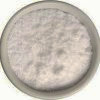| We are manufacturers of Lactic Acid FCC Food USP BP Ph Eur Grade and Pharmaceutical Excipients in India. We offer Halal and Kosher product made in an ISO9001, ISO22000 (FSSC22000) cGMP and GLP certified facility. The units have one or more of the certifications like FDA GMP-GLP, ISO 9001, ISO 22000, HACCP, REACH, Kosher & Halal |




Lactic Acid FCC Food USP BP Ph Eur Grade Manufacturers
CAS Number: 50-21-5, EINECS EC Number: 200-018-0, Molecular Formula: C3H6O3, Molecular Weight: 90.08

SDS of Lactic Acid Manufacturers Suppliers
Lactic Acid FCC Food Grade Specifications
α-Hydroxypropionic Acid; 2-Hydroxypropionic Acid
C3H6O3 -- Formula wt 90.08
INS: 270 CAS: L(+)-Lactic Acid [CAS 79-33-4]
CAS: DL-Lactic Acid [CAS 598-82-3]
DESCRIPTION
Lactic Acid occurs as a colorless or yellow, syrupy liquid consisting of a mixture of lactic acid (C3H6O3) and lactic acid lactate (C6H10O5). It is obtained by the lactic fermentation of
sugars or is prepared synthetically. It is usually available in solutions containing the equivalent of from 50% to 90% lactic acid. It is hygroscopic, and when concentrated by boiling, the acid condenses to form lactic acid lactate, 2-(lactoyloxy)propanoic acid, that on dilution and heating, hydrolyzes to Lactic Acid. It is miscible with water and with alcohol.
Function: Acidifier.
Identification: A sample gives positive tests for Lactate.
Assay: Not less than 95.0% and not more than 105.0% of the labeled concentration of C3H6O3.
Chloride: Not more than 0.1%.
Citric, Oxalic, Phosphoric, or Tartaric Acid:Passes test.
Cyanide: Not more than 5 mg/kg.
Iron: Not more than 10 mg/kg.
Lead: Not more than 0.5 mg/kg.
Residue on Ignition: Not more than 0.1%.
Sugars: Passes test.
Sulfate: Not more than 0.25%.
Lactic Acid USP Grade Specifications
Propanoic acid, 2-hydroxy-. Lactic acid [CAS 50-21-5].
Lactic Acid is a mixture of lactic acid (C3H6O3) and lactic acid lactate (C6H10O5) equivalent to a total of not less than 88.0 percent and not more than 92.0 percent, by weight, of C3H6O3. It is obtained by the lactic fermentation of sugars or is prepared synthetically. Lactic Acid obtained by fermentation of sugars is levorotatory, while that prepared synthetically is racemic. [NOTE—Lactic Acid prepared by fermentation becomes dextrorotatory on dilution, which hydrolyzes L-( )-lactic acid lactate to L-(+)-lactic acid.]
Identification: It meets the requirements of the test for Lactate.
Specific rotation: between 0.05 and +0.05 , for racemic Lactic Acid.
Readily carbonizable substances: Rinse a test tube with sulfuric acid, and allow to drain for 10 minutes. Add 5 mL of sulfuric acid to the test tube, carefully overlay it with 5 mL of Lactic Acid, and maintain the tube at a temperature of 15 : no dark color develops at the interface of the two acids within 15 minutes.
Residue on ignition: not more than 3 mg, from a 5-mL portion (0.05%).
Sugars: To 10 mL of hot alkaline cupric tartrate add 5 drops of Lactic Acid: no red precipitate is formed.
Chloride: To 10 mL of a solution (1 in 100) acidified with nitric acid add a few drops of silver nitrate: no opalescence is produced immediately.
Sulfate: To 10 mL of a solution (1 in 100) add 2 drops of hydrochloric acid and 1 mL of barium chloride: no turbidity is produced.
Heavy metals: 0.001%.
Limit of citric, oxalic, phosphoric, or tartaric acid: To 10 mL of a solution (1 in 10) add 40 mL of calcium hydroxide, and boil for 2 minutes: no turbidity is produced.
Assay: To about 2.5 mL of Lactic Acid, accurately weighed in a tared 250-mL flask, add 50.0 mL of 1 N sodium hydroxide, and boil the mixture for 20 minutes. Add phph, and titrate the excess alkali in the hot solution with 1 N sulfuric acid. Perform a blank determination.
Each mL of 1 N sodium hydroxide is equivalent to 90.08 mg of C3H6O3.
Lactic Acid BP Ph Eur Grade Specifications
Ph Eur
C3H6O3 -- 90.1 -- CAS 50-21-5
DEFINITION
Mixture of 2-hydroxypropanoic acid, its condensation products, such as lactoyl-lactic acid and polylactic acids, and water. The equilibrium between lactic acid and polylactic acids depends on the concentration and temperature. It is usually the racemate ((RS)-lactic acid).
Content: 88.0 per cent m/m to 92.0 per cent m/m of C3H6O3.
CHARACTERS
Appearance: Colourless or slightly yellow, syrupy liquid.
Solubility: Miscible with water and with ethanol (96 per cent).
IDENTIFICATION
A. Dissolve 1 g in 10 ml of water. The solution is strongly acidic.
B. Relative density: 1.20 to 1.21.
C. It gives the reaction of lactates.
TESTS
Solution S: Dissolve 5.0 g in 42 ml of 1 M sodium hydroxide and dilute to 50 ml with distilled water.
Appearance: The substance to be examined is not more intensely coloured than reference solution.
Ether-insoluble substances: Dissolve 1.0 g in 25 ml of ether. The solution is not more opalescent than the solvent used for the test.
Sugars and other reducing substances: To 1 ml of solution S add 1 ml of 1 M hydrochloric acid , heat to boiling, allow to cool and add 1.5 ml of 1 M sodium hydroxide and 2 ml of cupri-tartaric solution. Heat to boiling. No red or greenish precipitate is formed.
Methanol: Maximum 50 ppm, if intended for use in the manufacture of parenteral dosage forms.
Citric, oxalic and phosphoric acids: To pass the test.
Sulphates: Maximum 200 ppm.
Calcium: Maximum 200 ppm.
Heavy metals: Maximum 10 ppm.
Bacterial endotoxins: Less than 5 IU/g, if intended for use in the manufacture of parenteral dosage forms without a further appropriate procedure for the removal of bacterial endotoxins. Before use, neutralise the test solution to pH 7.0-7.5 with strong sodium hydroxide solution and shake vigorously.
Manufacturers Suppliers Exporters
Anmol Chemicals
S-8, SARIFA MANSION, 2ND FLANK ROAD, CHINCHBUNDER, MUMBAI 400009, INDIA
TEL: (OFFICE) 91-22-23770100, 23726950, 23774610, 23723564. FAX: 91-22-23728264
e-mail: anmolc@mtnl.net.in

Exports to USA, Canada, UAE, Dubai, South Africa, Tanzania, Kenya, Nigeria, Egypt, Uganda, Turkey, Mexico, Brazil, Chile, Argentina, Europe Netherlands, Italy, Spain, Germany, Portugal, France, Malaysia, Indonesia, Thailand, Vietnam, Korea, Japan, etc.
Copyright and Usual Disclaimer is Applicable. 19 January, 2022